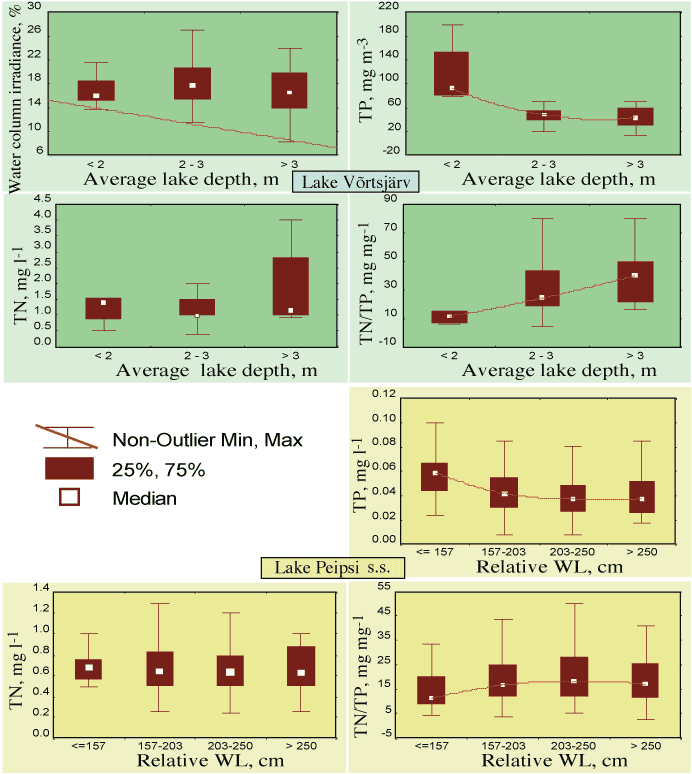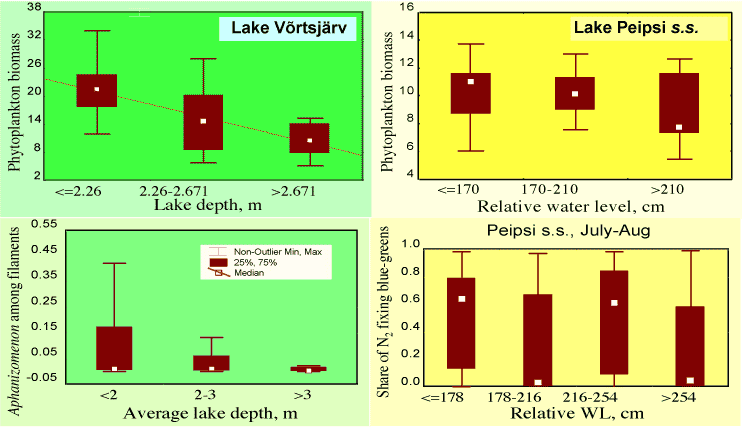


 |  |  | 21.5 Water level, nutrients and phytoplankton |
In very shallow L. Võrtsjärv the annual mean amplitude of WL (1.4m) is equal to ½ of its mean depth, and the absolute range of WL fluctuations (3.2m) even exceeds the mean depth of the lake. Between the registered absolute minimum and maximum WL the lake area differs 1.4 times, the mean depth 2.5 times, and the volume 3.5 times (Figure 7) having a strong influence on the ecosystem [336]. In low-water years, the water column is better illuminated while both phosphorus release and denitrification increase because of more frequent resuspension of bottom sediments (Figure 8) bringing about substantially higher phosphorus concentration and lower N/P ratio (Figure 9). Such conditions favour the development of phytoplankton, first of all nitrogen-fixing cyanobacteria. In L. Võrtsjärv phytoplankton biomass is substantially higher and the share of N2-fixing species bigger in low-water years (Figure 10). In deeper L. Peipsi where seasonal and absolute WL variation ranges make up approximately 1/5 and ½ of the mean depth, respectively, the direct influence of the WL is not so obvious.



 |  |  | 21.5 Water level, nutrients and phytoplankton |